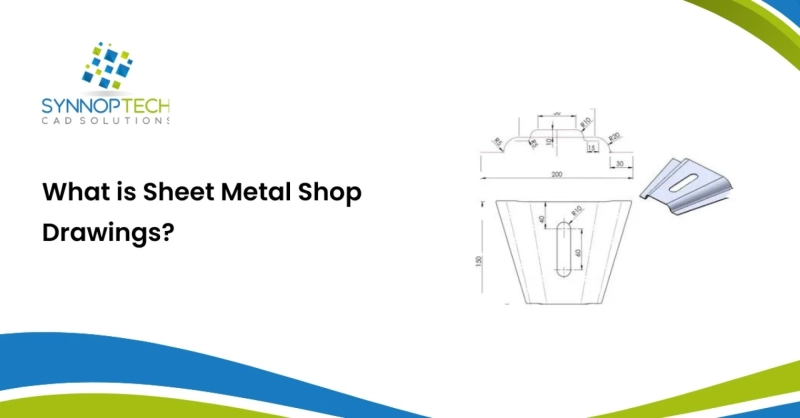Sheet metal shop drawings refer to a type of technical drawing used in fabrication and manufacturing that details the exact specifications of sheet metal components. These drawings are used by sheet metal fabricators to create products from the materials specified. They are also used to communicate with architects and engineers, and provide them with the necessary information needed for a successful project.
What Information is Included in Sheet Metal Shop Drawings?
Sheet metal shop drawings contain all the information needed to accurately construct a product or component from sheet metal. This includes measurements, angles, bend allowances, dimensions, and other specifications. The drawings also provide detailed notes about any special instructions that need to be followed during fabrication and assembly. Additionally, they will include any additional information required for proper installation such as hole sizes and locations.
How Sheet Metal Shop Drawings Benefit Businesses
Sheet metal shop drawings can be incredibly beneficial for businesses due to their ability to streamline production processes. By having all the necessary information in one place, it eliminates confusion caused by incorrect measurements or incomplete instructions. Additionally, this reduces waste due to errors or rework because everything is documented before production begins. Furthermore, these drawings make it easier for architects and engineers to design projects since they have all the details they need right at their fingertips.
Types of Sheet Metal Shop Drawings
There are two main types of sheet metal shop drawings - assembly and single part. Assembly drawings combine multiple views (front, top, side) with dimensions, as well as any additional information necessary for the fabrication process such as notes on material thicknesses or locating holes. Single part drawings illustrate a single part in more detail than an assembly drawing. This type of drawing is helpful when fabricating more complex parts which require additional attention to detail.
Conclusion:
In conclusion, sheet metal shop drawings are an essential tool for businesses that use sheet metal in their products or components. They provide accurate information about measurements, angles, bend allowances, dimensions, and other important details that ensure successful fabrication and assembly of products from sheet metals. Additionally, these detailed documents eliminate confusion during production processes and reduce waste due to errors or rework which ultimately saves time and money for businesses. Sheet metal shop drawings allow businesses to increase their efficiency while producing quality products every time!



